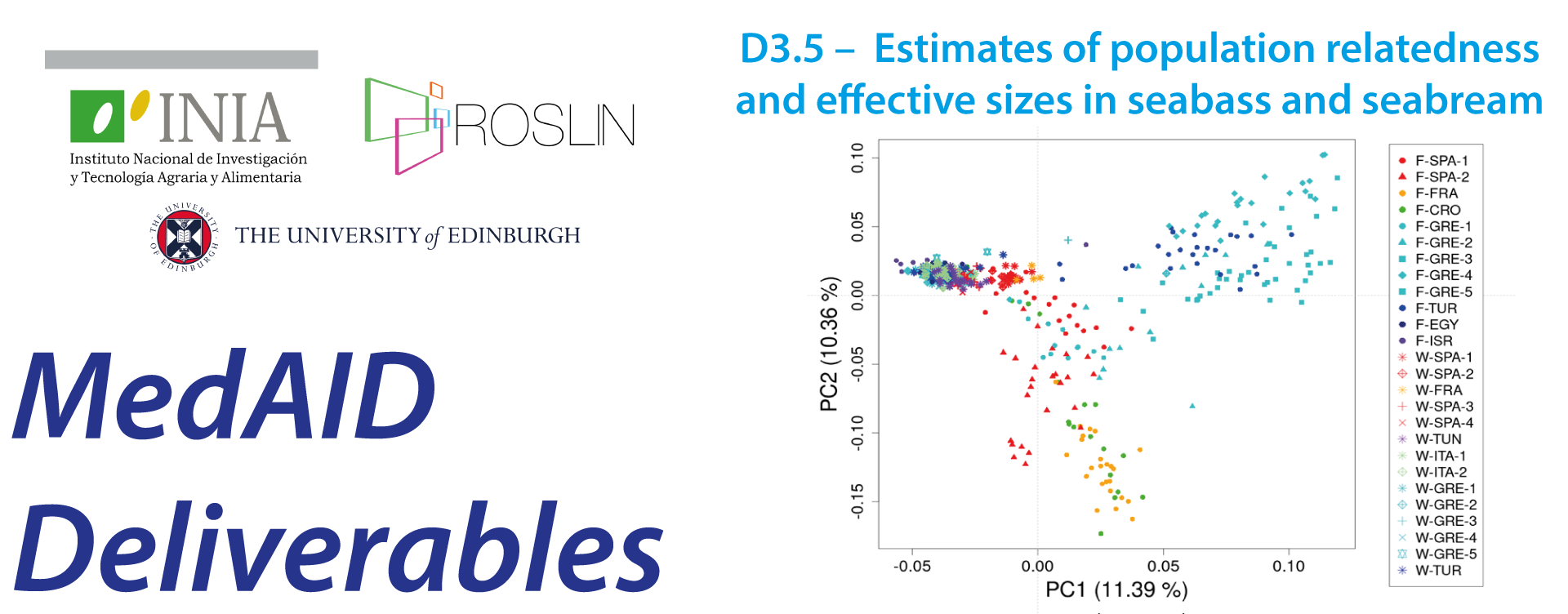This report is part of MedAID Work Package 3 on Genetics and Breeding. In particular, it describes the application of the MedFish SNP array (developed through collaboration between the MedAID and PerformFISH projects – see Deliverable 3.1) to determine population structure and genetic variability in European seabass and gilthead seabream.
Knowledge on population structure and genetic diversity within and between wild and farmed populations is of paramount importance to achieve sustainable aquaculture production of Mediterranean seabream and seabass. In particular, the success of any breeding programme critically depends on the way in which the base population of breeders is built, as the genetic variability initially available in the founders will determine the subsequent genetic progress. These base populations can be created from wild or farmed populations and it is thus necessary to determine the relatedness between them in order to optimize their creation. Also, once genetic improvement programmes are running, the control of inbreeding and effective population size (a parameter inversely related to the loss of genetic variability) is needed to ensure their sustainability.
Fish escapes from aquaculture facilities are perceived as a major threat to natural biodiversity in marine waters as they may cause undesirable genetic effects in native populations through interbreeding. Thus, knowledge on the relatedness between wild and farmed populations will help to assess the risk of the genetic impact on wild populations from escapes of cultured fish.
The main conclusions from this study are the following:
• The MedFish array is a useful tool for discriminating between wild and farmed populations of seabream and seabass, and for determining the genetic diversity that exists within populations.
• To our knowledge, this is the first time that a population genetic analysis in these species has been carried out with such a high number of SNP markers.
• Clustering methods revealed a clear differentiation between wild and farmed populations. Thus, special care must be taken to avoid escapes that could have undesirable genetic effects in native populations.
• Wild populations show a low degree of differentiation, particularly in seabream.
• Despite little differentiation among wild populations, a slight differentiation was observed between Atlantic and Mediterranean seabream populations and between western and eastern Mediterranean populations in both species.
• Farmed populations were quite heterogeneous and showed a high degree of differentiation.
• A few farmed populations of both species showed genetic compositions similar to those found in wild populations. This may indicate that their selective breeding programmes are still in their beginnings or that broodstock is renewed using wild fish.
• In general, the effective population size was large (> 1,000 fish) for wild and small (< 100 fish) for farmed populations of both species, with some exceptions.
• The low effective population size estimated for some farmed populations highlight the need of applying measures to control the loss of genetic variability.

